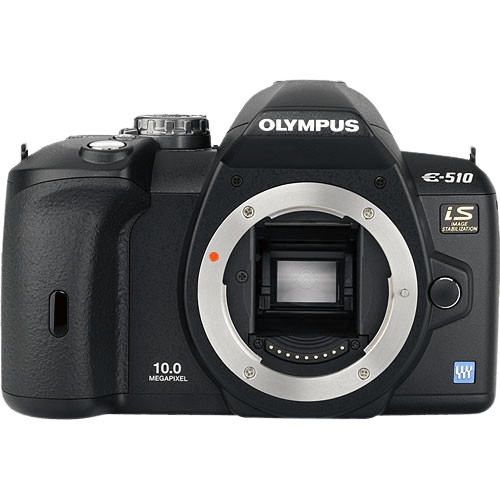Olympus E510 Specs and Scores

The Olympus E510 receives a score of 35/100 in our evaluation. Launched in 2007 with an introductory price of $593, this DSLR camera measures 136 x 92 x 68mm and weighs 490g (1.08lbs). Considering the advancements in camera technology over the years, the E510’s specifications may not be impressive in today’s market. However, it was a solid option for photography enthusiasts during its time. While its score does not dictate its quality, it showcases the camera’s capabilities in relation to contemporary alternatives.
Olympus E510 Overview and Optics
The Olympus E510 scores 34 out of 100 in our optics evaluation. With 10 megapixels, a shooting speed of 3 frames per second, and an NMOS sensor, the camera may seem underwhelming compared to modern offerings. The TruePic III processor and a DXOMARK sensor score of 52 further emphasize its dated performance. The camera features a Micro Four Thirds sensor size and lens mount, which is smaller than the more popular APS-C and full-frame formats.
However, the E510 does offer a 4:3 aspect ratio, which can be ideal for certain photography styles. Unfortunately, the camera lacks image stabilization, a crucial feature for capturing sharp, blur-free images. This absence of modern specifications makes it difficult for the Olympus E510 to compete with current camera models.
The Olympus E510’s optics are not up to par with today’s market standards, making it a less desirable choice for photographers seeking advanced features and performance.
Olympus E510 Video Performance
The Olympus E510 lacks video capabilities. This camera only captures still images, not video recordings.
Olympus E510 Features and Benefits
The Olympus E510 scores 30 out of 100 in the features category. This camera has a 2.5-inch screen with a resolution of 230,000 dots. The Olympus E510 does not have a touchscreen, flip screen, GPS, WIFI, or Bluetooth capabilities.
Compared to today’s market, the Olympus E510’s features are limited. Modern cameras often have larger screens, higher resolution, and advanced connectivity options. The lack of a touchscreen, flip screen, and wireless connectivity options make the Olympus E510 less convenient for users who need these features for their photography needs.
Despite its low feature score, the Olympus E510 still provides satisfactory performance for users who prioritize basic photography functions over advanced features. However, users seeking a camera with more up-to-date capabilities may want to consider other options.
Olympus E510 Storage and Battery
The Olympus E510 receives a storage and battery score of 57/100. This camera has two memory card slots, accepting Compact Flash (Type I or II) and xD Picture Cards. This variety of card options provides flexibility for users. However, the absence of SD card compatibility, a popular format in today’s market, may be seen as a drawback.
The E510’s battery life allows for 440 shots, powered by a BLM-1 battery type. While this may have been impressive when the camera was first released, it falls short compared to modern cameras that offer longer battery life. Additionally, the lack of USB charging limits the charging options for users.
Considering the storage and battery aspects, the Olympus E510 shows its age with limited memory card compatibility and battery life. Although still functional, it may not be the top choice for those seeking advanced features in these areas.
